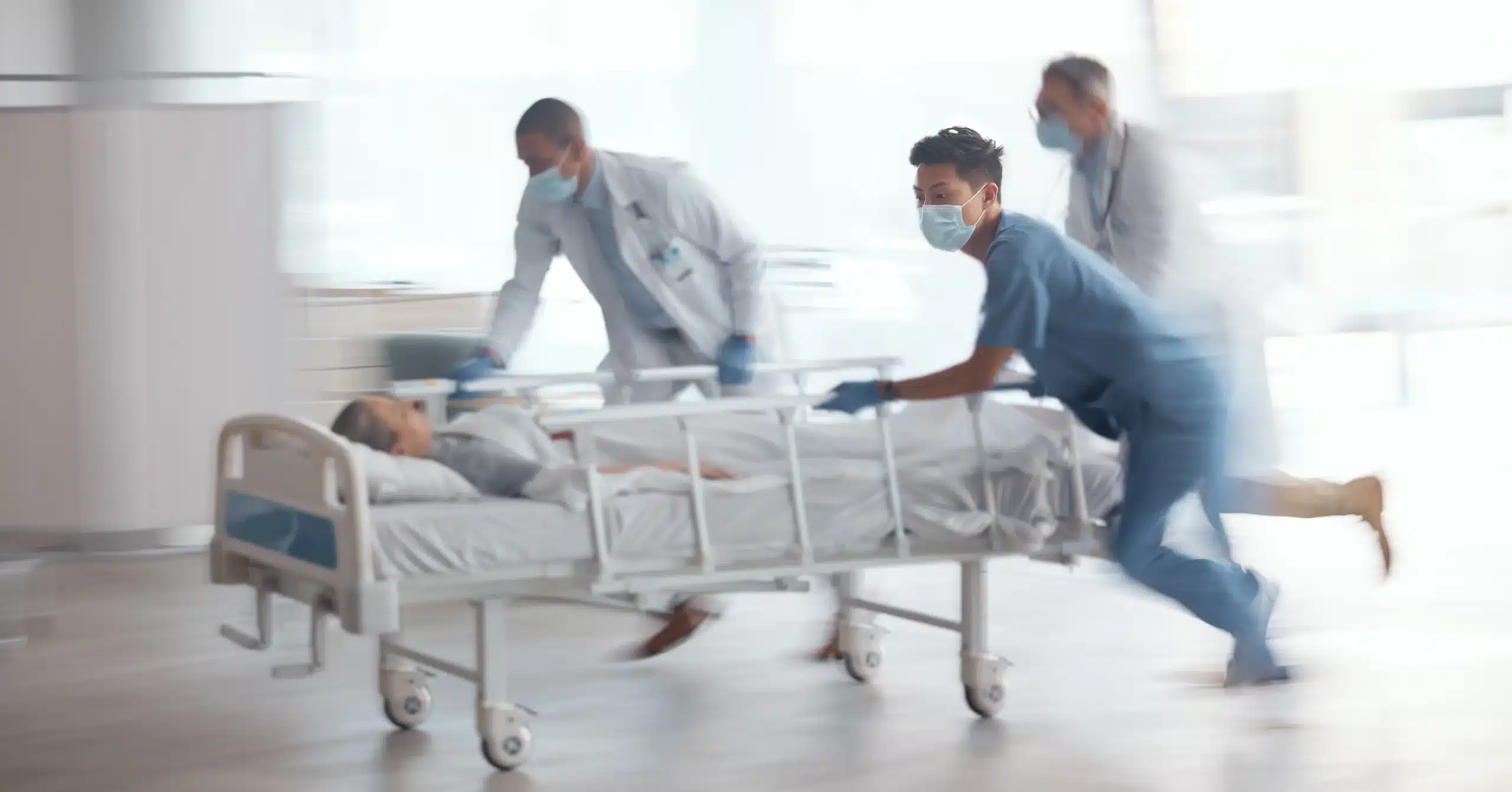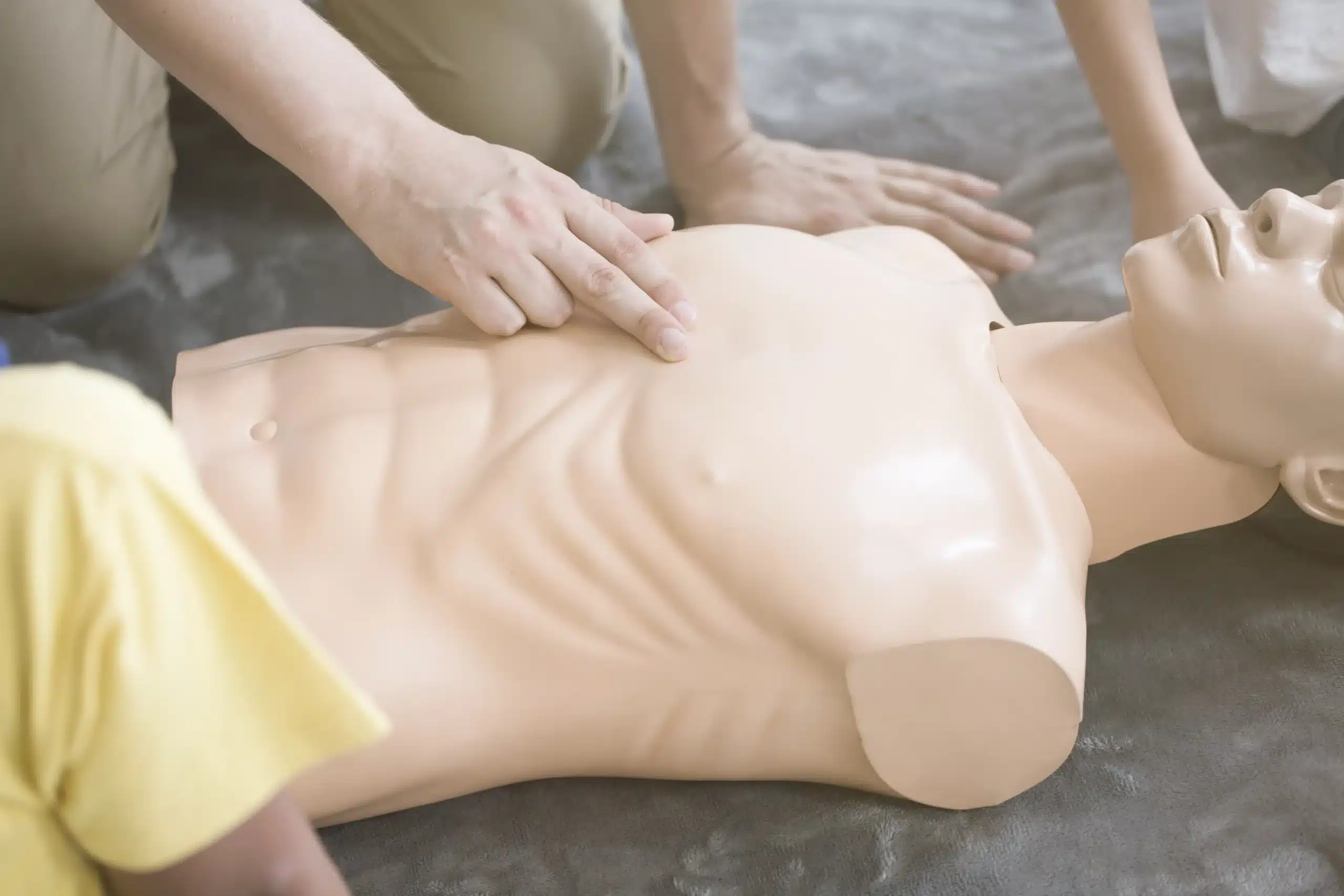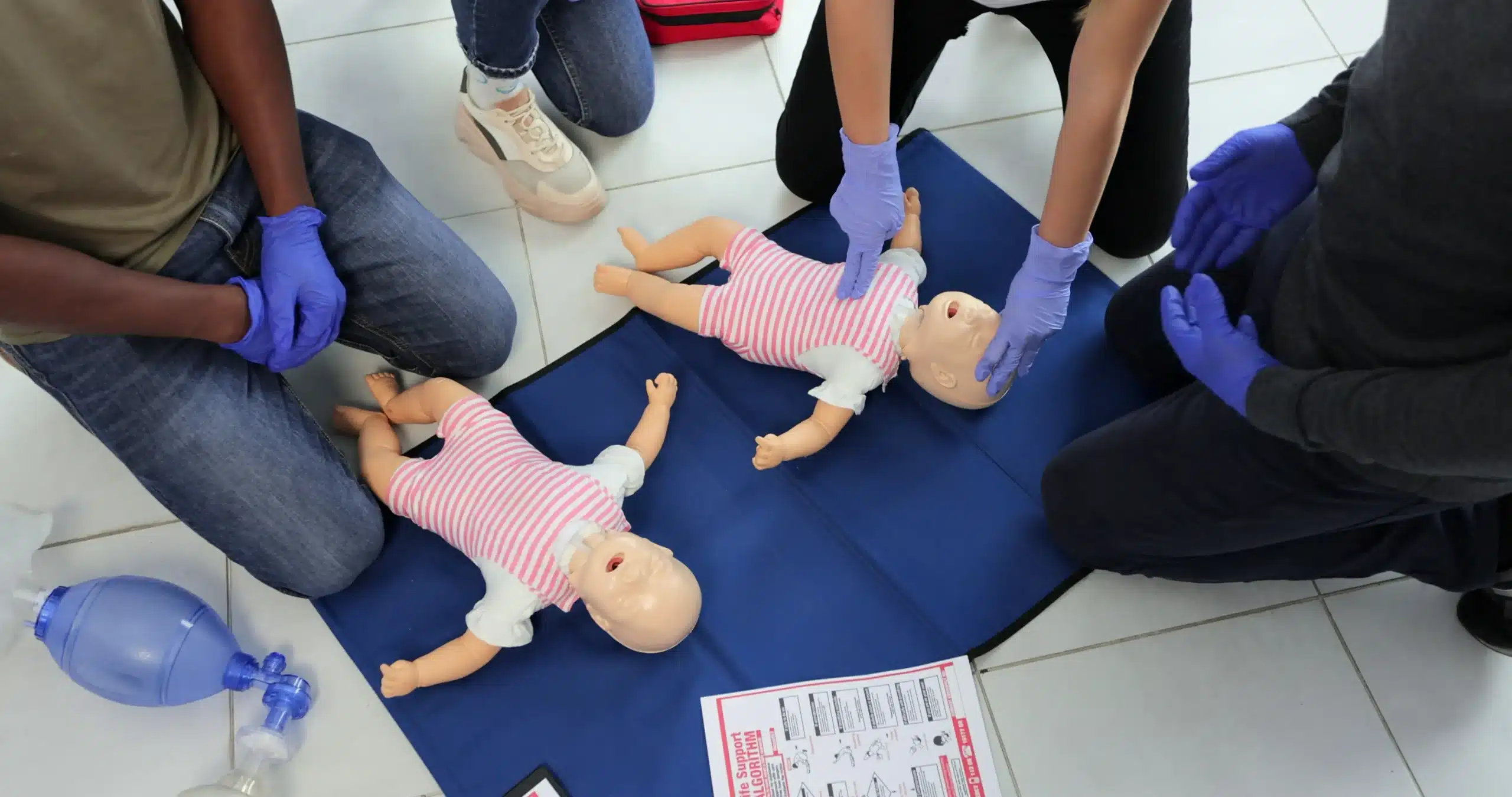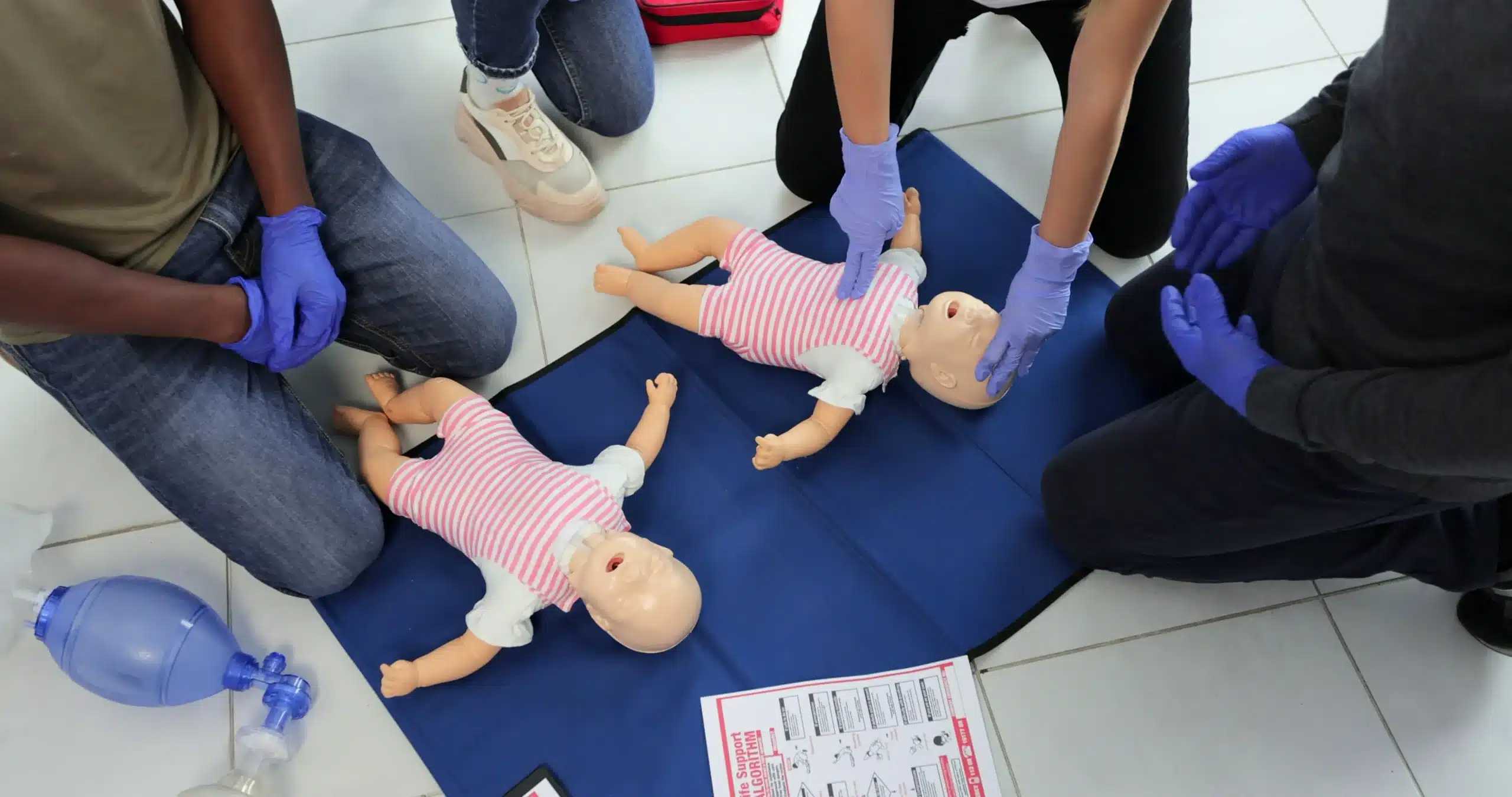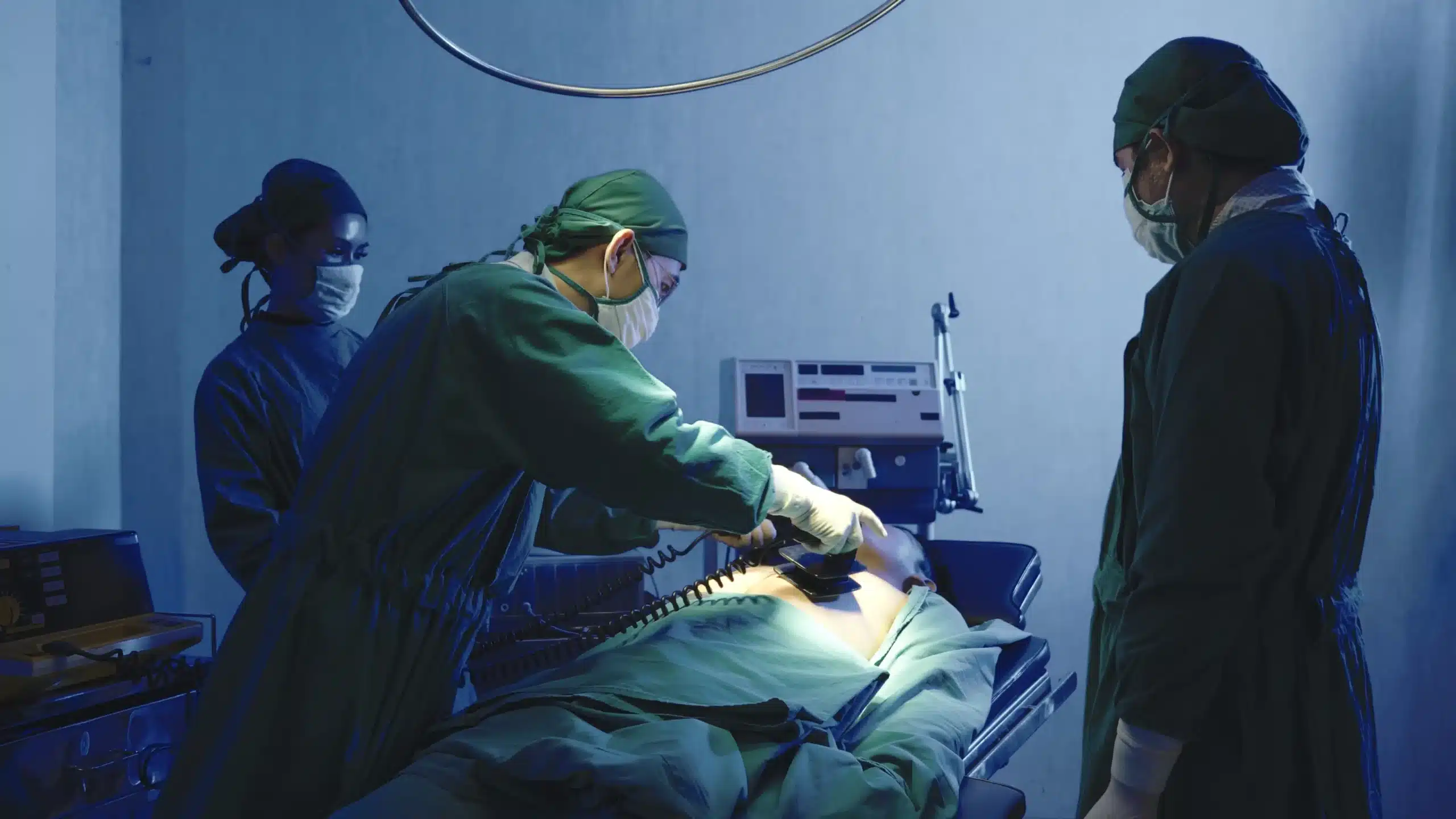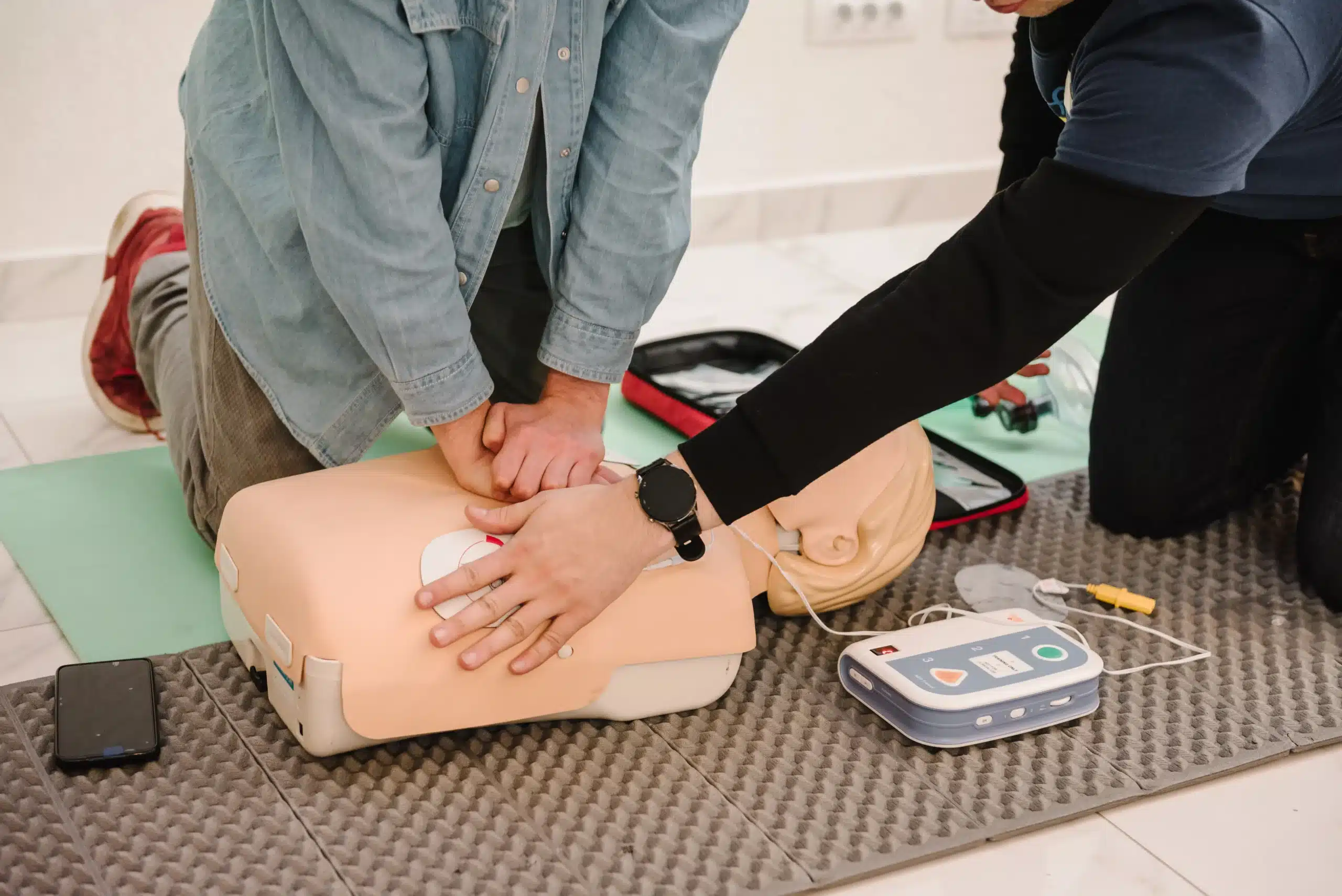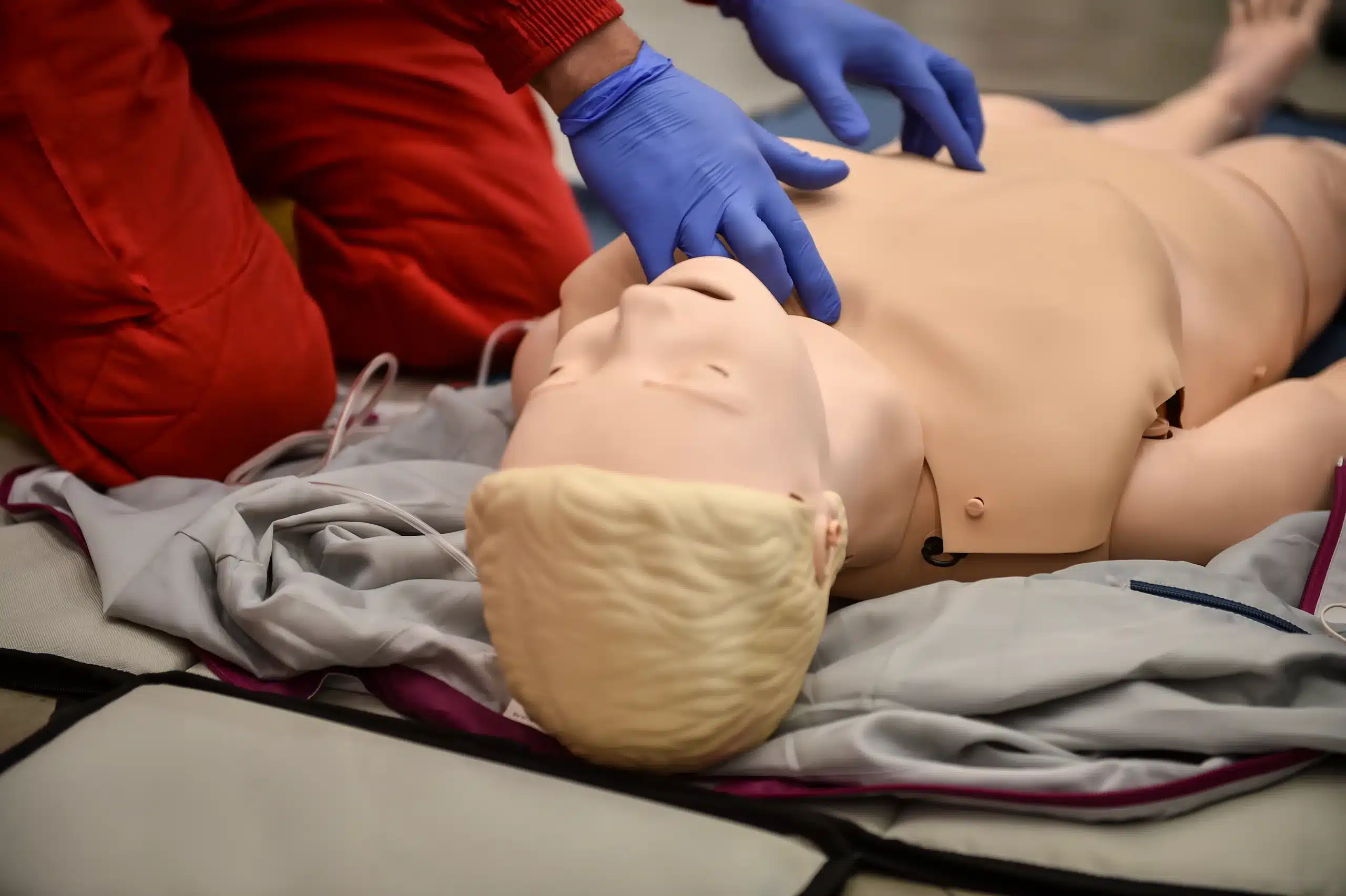In a medical emergency, seconds can matter. Knowing how to respond quickly and effectively can be the difference between life and death. That’s where BLS certification comes in. BLS certification: your first step toward saving lives in Alameda, provides the skills and confidence to act decisively in critical situations. From performing CPR and using an AED to recognizing the signs of a heart attack or stroke, BLS training equips you to provide immediate care when it matters most. This article will guide you through everything you need to know about BLS certification, from the core skills you’ll learn to the career advantages it offers.
Key Takeaways
- BLS certification equips you with essential life-saving skills: Learn CPR, AED use, and airway management to confidently handle various medical emergencies. This training offers significant benefits for healthcare professionals and anyone who wants to be prepared for a crisis.
- Choosing the right BLS course is key: Consider factors like online, in-person, or blended learning formats, cost, and training center reputation. Prioritize certified training centers, such as those offering American Heart Association courses, to ensure high-quality instruction.
- Maintain your BLS certification for continued effectiveness: Renew your certification every two years to stay up-to-date with the latest guidelines and maintain your credentials. Regular practice is essential for keeping your skills sharp and ensuring you’re always ready to respond confidently in an emergency.
What is BLS Certification?
BLS certification teaches the skills needed to save a life. It covers essential techniques like CPR, using an AED (automated external defibrillator), and how to help someone who’s choking.
Core BLS Skills
BLS training focuses on high-quality CPR and how to use an AED effectively. You’ll learn to recognize the signs of a cardiac arrest and provide CPR for adults, children, and infants. Because different age groups require specific techniques, BLS training covers these variations to ensure you’re prepared for any situation. Airway management is another crucial component, teaching you how to open someone’s airway and provide rescue breaths. These skills empower you to take action when every second counts.
BLS vs. CPR: What’s the Difference?
While CPR is a core part of BLS, there are key differences. Think of CPR as the foundation, and BLS as the next level. CPR training teaches the basics of chest compressions and rescue breaths, while BLS certification builds upon that foundation with more advanced skills like using an AED, team dynamics during resuscitation, and specific protocols for different medical emergencies. If you’re considering a career in healthcare, BLS certification is often a requirement and can significantly enhance your career prospects. It also provides valuable skills for personal emergency preparedness, giving you the confidence to act quickly and effectively if someone needs help.
Why Get BLS Certified?
BLS certification goes beyond basic CPR, equipping you with advanced skills to respond effectively during medical emergencies. It’s a crucial credential for healthcare providers, offering significant professional and personal advantages.
Benefits for Healthcare Professionals
BLS certification is often a job requirement in healthcare. It demonstrates your commitment to patient safety and your ability to provide critical care in life-threatening situations. BLS training covers core skills like CPR, AED use, and airway management, giving you the confidence to act quickly and decisively. These skills are essential for various healthcare roles, from doctors and nurses to paramedics and emergency medical technicians. Beyond meeting job requirements, a current BLS certification can open doors to career advancement and specialized roles. It shows potential employers you’re dedicated to high-quality patient care and possess the skills to handle critical situations. A safer work environment for both patients and colleagues comes from having team members who can confidently respond in an emergency. These skills also empower you to handle emergencies outside the workplace.
BLS Certification: Why it Matters in Alameda
The demand for BLS-certified professionals is high in Alameda, given the city’s robust healthcare sector. Obtaining your BLS certification can significantly improve your local job prospects. Several providers offer BLS courses in Alameda, with various course formats like in-person and blended learning. This flexibility makes it easier to find a course that fits your schedule and learning style. Choosing a certified training center, like those offering American Heart Association courses, ensures your training meets the highest industry standards. Investing in BLS certification isn’t just about career advancement; it’s about becoming a vital link in the chain of survival, ready to make a difference when it matters most.
Find BLS Training in Alameda
Finding the right BLS training program is crucial for your success. Several factors come into play, including the training format (online, in-person, or blended learning), the cost, and the reputation of the training center. Let’s explore some options available in Alameda.
Safety Training Seminars: Your Best Choice for BLS
Safety Training Seminars offers a comprehensive range of American Heart Association (AHA) courses, including BLS certification, to equip you for various emergency situations. They also offer other essential life-saving courses like CPR and First Aid, and EMSA Child Care Health & Safety training. Known for their commitment to excellent customer service and offering the lowest prices in Alameda County, Safety Training Seminars provides same-day certification cards, making it a convenient and affordable option. They even offer discounts for group classes.
Other Local Training Options
While Safety Training Seminars is a top choice, exploring other options is always a good idea. BLS training is essential for various professionals, from healthcare providers and first responders to those working in education, childcare, and even fitness. Look for programs that cover the core concepts of basic life support, including specialized techniques for infants, children, and adults. This ensures you’re prepared to handle emergencies involving individuals of all ages. You can often find additional local providers through resources like the American Heart Association website. Remember to check reviews and compare course content before making your decision.
How to Get BLS Certified
Getting your BLS certification is straightforward. This section covers what to expect in terms of course structure, time commitment, and cost.
Course Structure and Duration
BLS training equips you with essential life-saving skills, from CPR and AED use to airway management. Whether you’re a healthcare professional or not, BLS training gives you the confidence to respond effectively in medical emergencies. Courses typically involve a combination of online learning and in-person skills sessions. This blended learning approach lets you study the theory of BLS at your own pace, then demonstrate your skills in a hands-on environment. Expect the in-person portion of most BLS courses to last between four and five hours. You can find convenient BLS training near you with a quick search.
Costs and Prerequisites
The cost of BLS certification varies, depending on the training provider and the type of course. Many providers offer group discounts, so if you’re training with colleagues or friends, it’s worth asking about. Safety Training Seminars offers a low-price guarantee for BLS certification in Alameda County. When choosing a BLS provider, consider the course format (online, in-person, or blended), cost, and the training center’s reputation. There are typically no prerequisites for BLS certification, making it accessible to everyone.
What Happens in BLS Training?
This section covers what you can expect during a typical BLS training course. Understanding the process can help you feel prepared and confident going into your class.
Hands-on Practice
BLS training is highly interactive, emphasizing hands-on learning to build muscle memory and practical skills. You’ll learn essential life-saving skills, from CPR and AED use to airway management. Expect to practice chest compressions, rescue breaths, and how to use an AED on training manikins. The instructors create realistic scenarios to simulate real-life emergencies. This immersive training style helps you develop the quick thinking and decisive action required in critical situations. BLS training often includes specialized techniques for infants, children, and adults, ensuring you provide appropriate care for individuals of all ages. You’ll learn how to assess the patient’s age and condition and apply the correct procedures.
Exams: Written and Practical
To receive your BLS certification, you’ll need to demonstrate your knowledge and skills through both written and practical exams. The written exam tests your understanding of BLS principles and procedures. The practical exam requires you to perform the skills you’ve learned in front of an instructor. This usually involves demonstrating CPR, using an AED, and other essential BLS techniques. The course culminates in in-person skills sessions with an instructor. These exams ensure you’re fully prepared to apply your BLS skills in a real-world emergency. Successfully completing both means you’ve met the American Heart Association’s standards for BLS certification.
How to Maintain Your BLS Certification
Keeping your BLS skills sharp is crucial for providing effective care during emergencies. This section covers how long your certification lasts and how to renew it.
How Long is Certification Valid?
BLS certification is typically valid for two years. After this period, you’ll need to renew your certification to stay current with the latest guidelines and maintain your credentials. This two-year timeframe ensures that healthcare providers regularly refresh their skills and knowledge, ultimately leading to better patient outcomes. For more information on BLS certification validity, visit our BLS Certification in Alameda page.
Renewing Your BLS Certification
Renewing your BLS certification involves retaking the course and passing the required exams. This ensures your skills and knowledge are up-to-date. Regular practice is key to maintaining proficiency in BLS techniques. Consider incorporating practice scenarios into your routine to build confidence and muscle memory. Check out our BLS renewal courses in Alameda for convenient and affordable renewal options. For a comprehensive guide on BLS certification in Alameda, visit our resource on BLS Certification Alameda. Staying current with your BLS certification demonstrates your commitment to providing high-quality care and contributes to a safer environment.
BLS Certification: Career Advantages
Advance Your Healthcare Career
BLS certification is often a prerequisite for many healthcare jobs. It shows employers you have the essential skills to handle medical emergencies. From doctors and nurses to physical therapists and medical assistants, BLS training provides a foundational skill set. It also demonstrates a commitment to patient safety and high-quality care, which can significantly improve your job prospects. Beyond entry-level positions, maintaining your BLS certification is often a requirement for career advancement. As you progress in your healthcare career, staying up-to-date on the latest guidelines and best practices is crucial. BLS renewal courses ensure you’re always prepared. Having current credentials shows a dedication to continuous learning and professional development, making you a more competitive candidate for promotions and specialized roles.
Benefits for Non-Medical Professionals
Even if you’re not in the healthcare field, BLS certification offers valuable skills applicable to various professions. Think childcare providers, teachers, coaches, personal trainers—anyone who works with the public can benefit from knowing how to respond to a medical crisis. BLS training teaches you how to perform CPR, use an AED, and assist someone who is choking. These skills empower you to act quickly and confidently in emergencies, potentially saving a life. Having a BLS certification on your resume can also make you a more desirable candidate for jobs in fields like education, fitness, and other community-based roles. It signals your preparedness and commitment to safety, valuable assets in any workplace. Plus, the ability to provide immediate assistance in a crisis can bring peace of mind to both you and those around you.
How BLS Skills Save Lives
Knowing BLS can be the difference between life and death. It empowers you to act quickly and effectively during medical emergencies, increasing the chances of a positive outcome. This section explores how these skills translate into real-world action.
Spotting Emergencies
BLS training sharpens your ability to recognize emergencies. You’ll learn to identify the signs of a heart attack, stroke, choking, and other life-threatening conditions. This rapid assessment is crucial, because early intervention is key to better outcomes. BLS gives you the tools to respond confidently, whether you’re a healthcare professional or someone providing first aid in your community. You can find more information on BLS training essentials from reputable sources. For those located in Alameda, you can find local BLS training with Safety Training Seminars.
Responding Effectively
Once you’ve identified an emergency, your BLS training takes over. You’ll be prepared to administer CPR, use an AED, and perform other life-saving techniques. BLS certification courses often include specialized training for infants, children, and adults, ensuring you provide appropriate care based on age and physical condition. This targeted approach is vital because effective interventions differ depending on the victim. Knowing how to adapt your response is a hallmark of comprehensive BLS training. Alameda residents can find convenient and affordable options for BLS certification through Safety Training Seminars.
Choosing the Right BLS Course in Alameda
Key Considerations
Finding the right BLS course is like finding the right pair of shoes—it needs to fit your needs. Think about what’s important to you. Is it a course recognized by a trusted organization like the American Heart Association? For many healthcare providers, this is a must-have. Also, consider the course format. Do you learn best in a traditional classroom setting, or would an online course offer you more flexibility? Your schedule and learning style play a big role here. And of course, there’s the question of cost. Compare prices, but remember that a low price doesn’t always mean a low-quality course. Check out our low price guarantee to see how we offer both affordability and excellence. Finally, look into the instructors’ experience and the training center’s reputation. A positive learning environment can make all the difference.
Online vs. In-Person Training
BLS training gives you the skills to respond to life-threatening emergencies, from CPR and using an AED to managing someone’s airway. When it comes to learning these skills, you’ve got options. Online BLS courses offer a lot of flexibility. You can work through the interactive modules at your own pace, which is great if you’re already familiar with some of the material or have a busy schedule. In-person classes, however, provide that crucial hands-on experience. There’s no substitute for practicing these skills in a real-world setting. Some providers offer a blended approach, combining online learning with in-person sessions—giving you the best of both worlds. Ultimately, the best format depends on how you learn best. If you’re a hands-on learner, an in-person class might be a better fit. If you prefer to learn at your own speed, an online or blended course could be ideal.
Related Articles
- CPR vs. BLS: Which Certification Do You Need? – Alameda CPR Classes
- BLS Certification: Career Benefits for Healthcare Professionals – Alameda CPR Classes
- BLS Certification: Build Confidence in Emergency Situations – Alameda CPR Classes
- BLS Courses in Berkeley: Your Complete Guide – Alameda CPR Classes
- BLS Renewal in Berkeley: Your Complete Guide – Alameda CPR Classes
Frequently Asked Questions
Is BLS certification the same as CPR certification? CPR is a core component of BLS, but BLS goes further. It includes CPR but also covers AED use, airway management, and other advanced life-saving techniques. Think of CPR as the foundation, and BLS as building upon that foundation with more comprehensive skills.
Why should I get BLS certified if I’m not in healthcare? BLS training equips you to handle medical emergencies, a valuable skill for anyone. Whether you’re a teacher, coach, childcare provider, or simply someone who wants to be prepared, BLS gives you the confidence to respond effectively in a crisis. Knowing how to perform CPR, use an AED, and help someone who’s choking can make a real difference.
What can I expect during a BLS course? BLS courses typically involve a combination of online learning and in-person skills sessions. You’ll learn the theory behind BLS online, then practice those skills in person using manikins and realistic scenarios. Expect hands-on training in CPR, AED use, and other essential techniques. You’ll also be tested on your knowledge and skills through written and practical exams.
How much does BLS certification cost, and how long is it valid? The cost of BLS certification varies depending on the training provider and course format. Many providers offer group discounts, so inquire about those if you’re training with others. BLS certification is typically valid for two years. After that, you’ll need to renew your certification to stay current with the latest guidelines.
How do I find a reputable BLS training provider in Alameda? Look for providers offering American Heart Association-certified courses, as this ensures the training meets industry standards. Consider factors like course format (online, in-person, or blended), cost, instructor experience, and the training center’s reputation. Reading reviews and comparing course content can also help you make an informed decision. Safety Training Seminars is a reputable provider in Alameda known for its comprehensive courses, excellent customer service, and competitive pricing.


